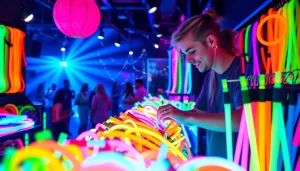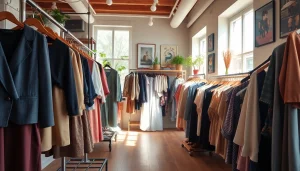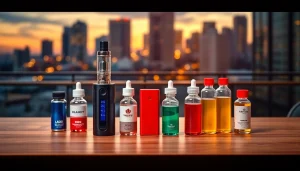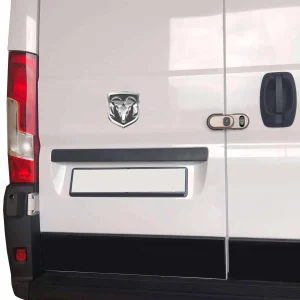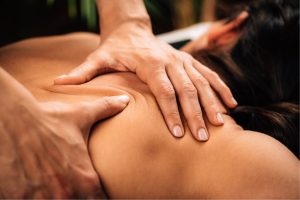Elevate Your Culinary Style with the Perfect Chef Coat
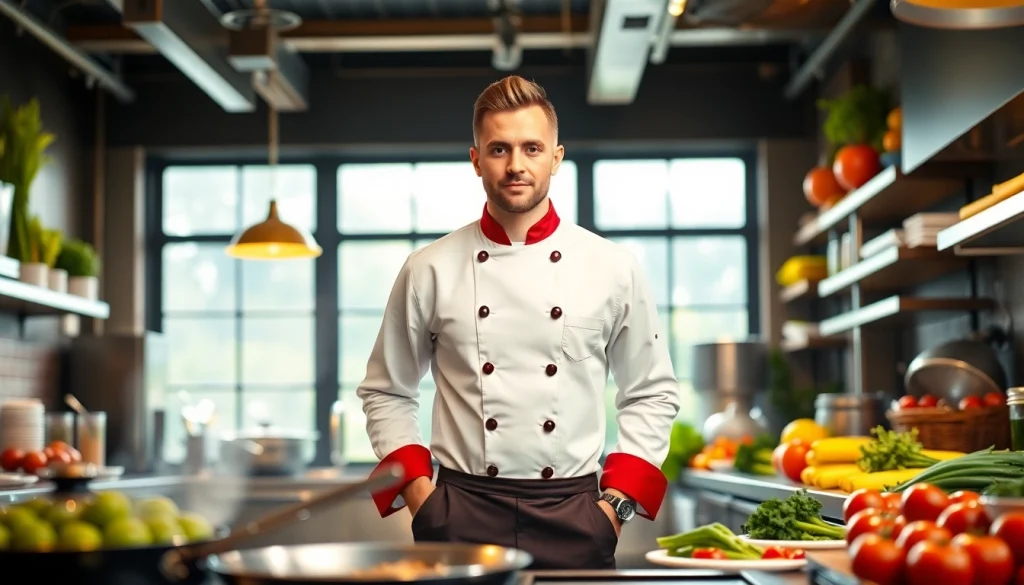
Understanding the Importance of the Chef Coat
A chef coat is more than just a piece of clothing; it serves as both a functional item and a symbol of professionalism in the culinary world. In high-pressure kitchen environments, having the right gear can significantly affect a chef’s performance and comfort. The chef coat is designed to not only provide a protective layer but also to represent the chef’s identity and style. This article delves deep into the practicalities, styles, trends, and care requirements associated with chef coats, equipping you with the knowledge to choose and maintain the perfect coat for your culinary adventures.
The Chef Coat as a Culinary Uniform
The chef coat acts as an essential part of a chef’s uniform, which has been standardized over centuries. Traditionally white, the coat symbolizes cleanliness, although modern variations have introduced colors and styles that cater to individual tastes and restaurant branding.
From the executive chef to sous chefs and line cooks, wearing a well-crafted chef coat promotes a sense of hierarchy and organization in the kitchen. Moreover, it aligns the team visually, enhancing their professionalism while creating a more collaborative atmosphere.
Material Choices for Chef Coats
The material used to craft chef coats plays a crucial role in their functionality. Traditionally, cotton was the fabric of choice due to its breathability and comfort. However, technological advancements have led to an array of materials:
- Cotton: Offers comfort and breathability but may not be the most durable or stain-resistant option.
- Polyester: Known for durability and wrinkle resistance. This material is often blended with cotton to enhance performance.
- Moisture-wicking fabrics: Quickly draw sweat away from the body, keeping chefs cool and dry during high-pressure cooking sessions.
- Insulated fabrics: Useful in colder kitchen environments or for outdoor chefs working in colder climates, these materials provide warmth.
Selecting the right fabric can greatly impact comfort and performance, particularly during long shifts in hot, bustling kitchens.
Functional Features of a Good Chef Coat
When choosing a chef coat, it’s essential to look for functional features that enhance both comfort and usability:
- Double-breasted design: Provides an extra layer of fabric that allows chefs to switch sides to hide stains during service.
- Pockets: Useful for storing essentials such as thermometers, notepads, and other tools required in the kitchen.
- Ventilation: Features such as side panels or vents ensure airflow, thereby reducing heat build-up.
- Reinforced stitching: Enhances durability, ensuring that the coat withstands the wear and tear of daily kitchen use.
These functional features are not just about aesthetics—they ensure that chefs can perform their duties comfortably and efficiently.
Choosing the Right Chef Coat for Your Needs
Selecting the perfect chef coat is a personalized experience. It’s essential to consider style, fit, and budget to make the best choice that caters to individual preferences and requirements.
Sizing and Fit Considerations
Proper sizing is crucial for both comfort and safety. A too-tight coat can restrict movement, while an oversized one can pose hazards, especially in a fast-paced kitchen setting. Most brands provide a sizing chart, which is invaluable in determining the right fit. Key considerations include:
- Body measurements: Knowing your chest, waist, and sleeve lengths can ensure a tailored fit.
- Style preferences: Some chefs prefer a streamlined fit for a modern look, while others lean towards a looser fit for mobility.
- Layering: Consider whether you’ll be wearing aprons, shirts, or other layers underneath your chef coat.
Styles and Designs Available
The world of chef coats has evolved significantly, with various styles suited for different chefs and kitchen environments. Options range from classic designs to contemporary aesthetics:
- Classic white chef coats: Timeless and professional, suitable for formal dining experiences.
- Colored coats: Often used by chefs to express creativity or align with restaurant branding.
- Short-sleeve coats: Ideal for warmer environments, allowing for comfortable cooking during high temperatures.
- Patterned coats: Emerging styles featuring unique designs that can reflect personal branding or creativity.
Fashion-forward chefs now have endless possibilities to express their individuality while still adhering to professional standards.
Price Ranges and Budgeting
Chef coats vary widely in price based on materials, brand, and design. Generally, you can expect to find options in the following ranges:
- Budget-Friendly: $15 to $40. These coats are often made from basic materials but can still offer decent quality.
- Mid-Range: $40 to $80. Offers better quality fabrics and designs, along with functional features.
- High-End: $80 to $140 or more. Typically crafted from premium materials with advanced functions and stylish designs.
When budgeting, consider the coat’s lifespan and durability. Investing in a quality chef coat can save money in the long run by reducing the need for frequent replacements.
Care and Maintenance of Your Chef Coat
Proper care ensures that your chef coat maintains its appearance, functionality, and longevity. Understanding how to wash, dry, and store your coat is essential.
Washing and Drying Instructions
Chef coats often encounter spills and stains, making washing a regular necessity. Here are some general tips for effective care:
- Follow care labels: Always check the washing instructions on the tag to avoid damaging the fabric.
- Stain removal: Treat stains as soon as possible using appropriate stain removers or pre-wash sprays.
- Machine wash: Most coats can be machine washed, but opt for a gentle cycle with cold water to preserve color and fabric integrity.
- Air drying: If possible, hang your coat to dry instead of using a dryer to prevent shrinking and maintain shape.
Storage Tips to Preserve Quality
Storing your chef coat properly can enhance its lifespan:
- Hanging: Use padded hangers to prevent creasing and maintain the coat’s shape.
- Avoid direct sunlight: Store in a cool, dark place to prevent colors from fading.
- Rotation: If you own multiple coats, rotate usage to allow each to rest and recover from wear.
Repairing Common Wear and Tear
Even with the best care, chef coats are prone to wear and tear. Addressing these common issues can extend their lifespan:
- Small tears: Sewing can fix small rips. Invest in a sewing kit for quick repairs.
- Loose buttons: Regularly check buttons and sew them back on if loose to prevent losing them during service.
- Fabric pilling: Use a fabric shaver to remove pilling and maintain a clean look.
Chef Coat Trends in the Culinary World
The culinary landscape is continuously evolving, and with it, the trends associated with chef coats. Staying updated on these trends can aid chefs in maintaining a modern and professional appearance.
Popular Fabrics and Textile Innovations
Innovations in fabrics have significantly impacted chef coats. Some emerging trends include:
- Bamboo fibers: Naturally odor-resistant and highly breathable, bamboo is becoming a popular choice for eco-conscious chefs.
- Quick-dry materials: These fabrics enable sweat to evaporate quickly, providing comfort during intensive cooking sessions.
- Stretch materials: Offering enhanced mobility, stretch fabrics allow chefs to move freely without compromising on fit.
Chefs now have the advantage of selecting functional fabrics that also align with their environmental ethics.
Color Trends and Personal Branding
Color choices play an essential role in a chef’s branding. Recently, many chefs have adopted personalized colors and patterns that reflect their style, culinary identity, or restaurant theme. Trending colors include:
- Bold colors: Bright shades or deep hues stand out and command attention.
- Earth tones: Reflect a more natural aesthetic, aligning with farm-to-table philosophies.
- Patterns: Unique patterns or designs can allow for self-expression and differentiate between chefs and staff in the kitchen.
Utilizing these elements can influence perceptions of professionalism and creativity in the culinary arts.
Sustainable Options in Chef Coat Manufacturing
With a growing emphasis on sustainability, many chefs are seeking eco-friendly options. Sustainable chef coats may be made from recycled materials or produced through ethical manufacturing processes. Key points include:
- Recycled fabrics: Some brands are producing coats from recycled plastic bottles, reducing waste and promoting sustainability.
- Local sourcing: Coats made from locally sourced materials can reduce environmental impacts associated with transportation.
- Ethical manufacturing: Supporting brands that ensure fair wages and conditions for workers uplifts communities and promotes ethical consumerism.
By choosing sustainable options, chefs contribute positively to the environment while maintaining a professional appearance.
Buying Your Chef Coat: Where and How
When it comes to purchasing a chef coat, there are several factors to consider to ensure you make the right choice.
Online vs. In-store Shopping Experiences
Shopping for a chef coat can be done effectively online or in physical stores:
- Online shopping: Offers convenience, more variety, and often better prices. However, it may require careful measurement for size and fit estimation.
- In-store shopping: Allows for trying on coats, which is invaluable for ensuring the right fit. Staff can provide personalized advice based on your needs.
Your choice will depend largely on personal preferences and comfort with purchasing clothing online.
Top Features to Consider Before Purchase
Before finalizing your purchase, consider essential features that can enhance your experience:
- Material: Choose a fabric that aligns with your working environment and provides the comfort you need.
- Functionality: Consider the pockets, closures, and ventilation to ensure the coat meets your needs in the kitchen.
- Care requirements: Know whether the coat can withstand regular washing without losing quality or shape.
Understanding Return and Exchange Policies
Regardless of where you buy your chef coat, familiarize yourself with return and exchange policies. This can save you from headaches in case the size or style doesn’t meet your expectations. Look for:
- Time frames: Most companies provide a specific time frame within which returns or exchanges can be made.
- Condition requirements: Check if the item must be unworn or in original packaging to facilitate returns.
- Shipping costs: Some companies will cover return shipping, while others may deduct costs from refunds.
By being educated about these policies, you can make your purchasing experience much smoother.
